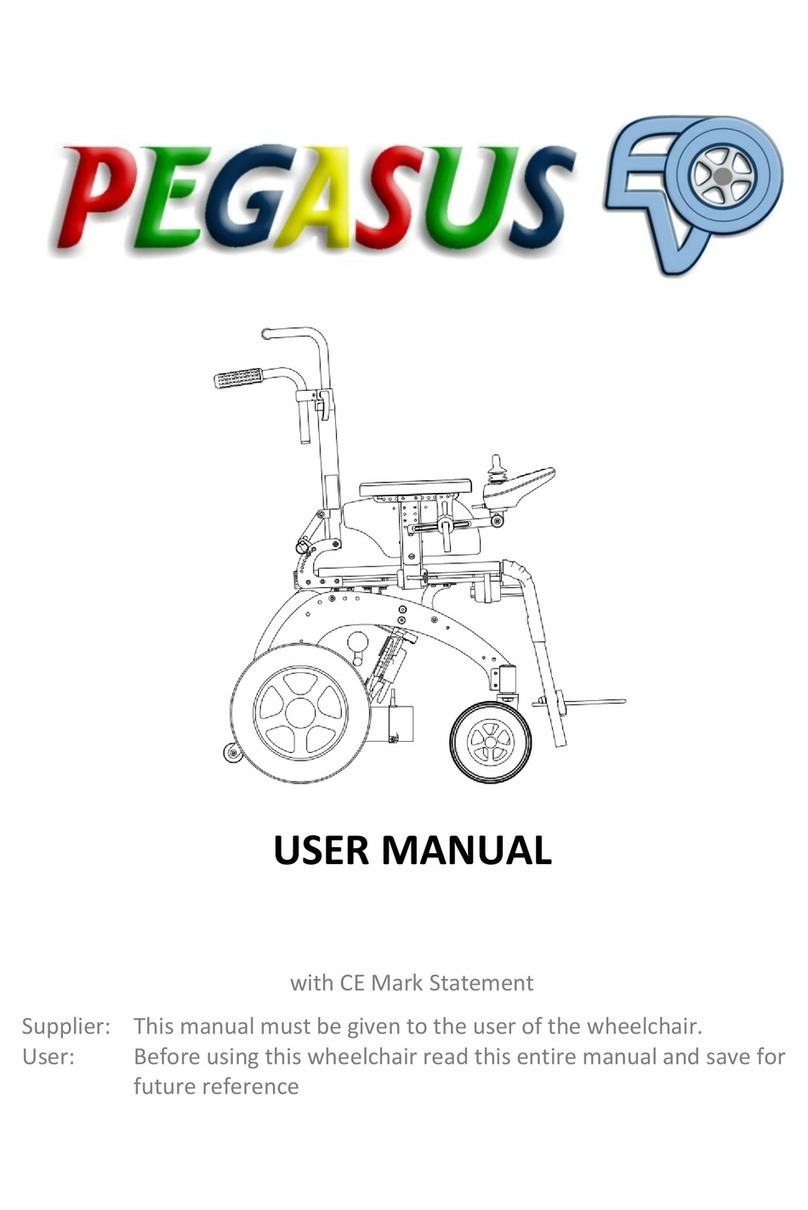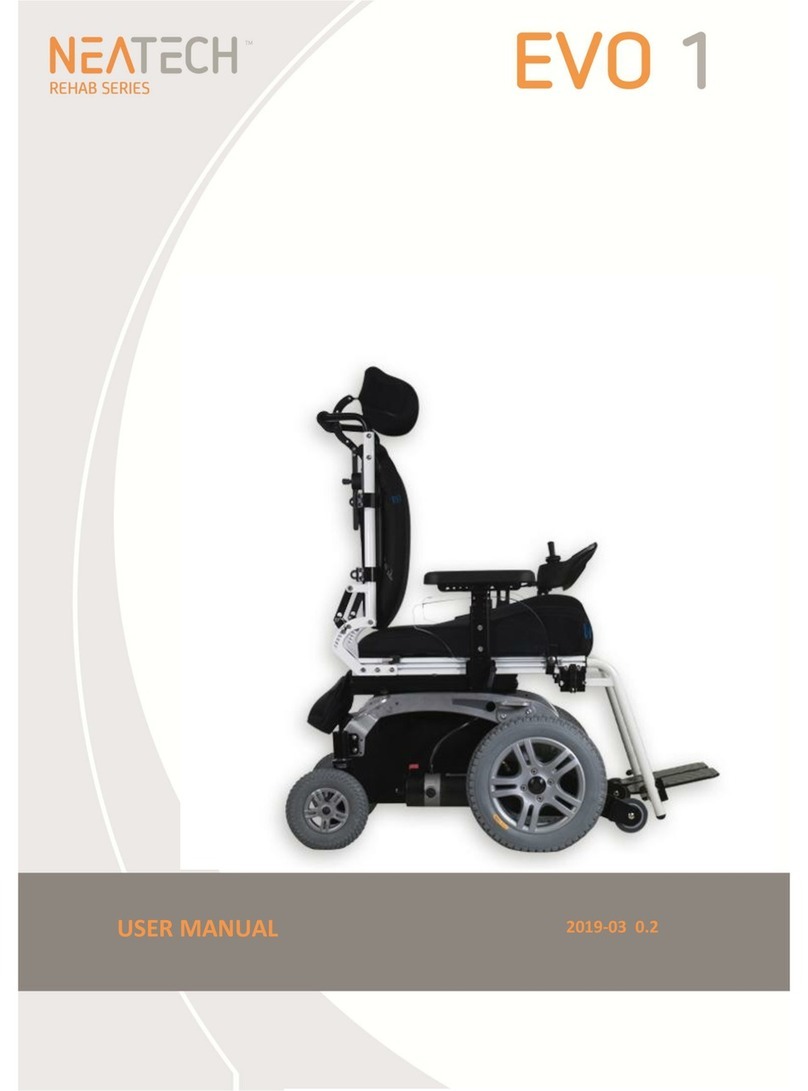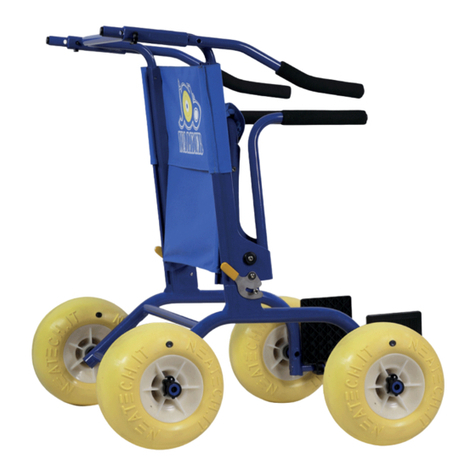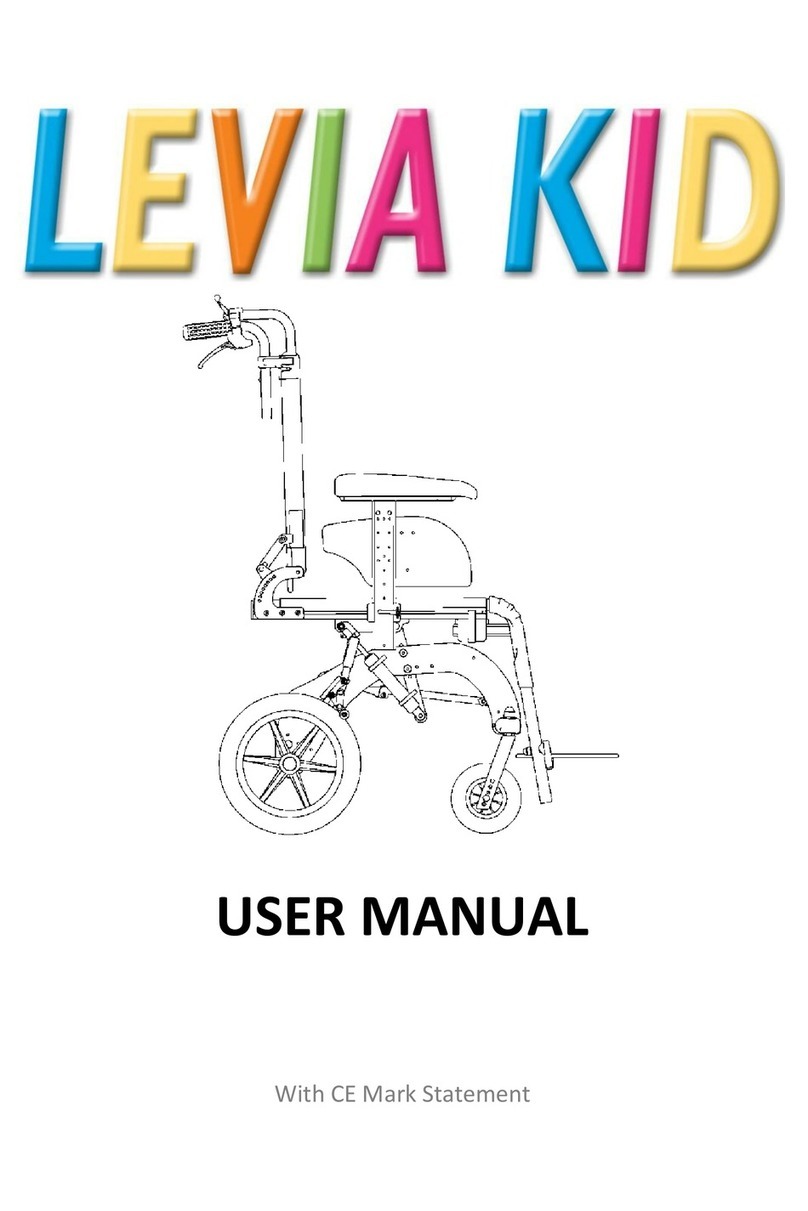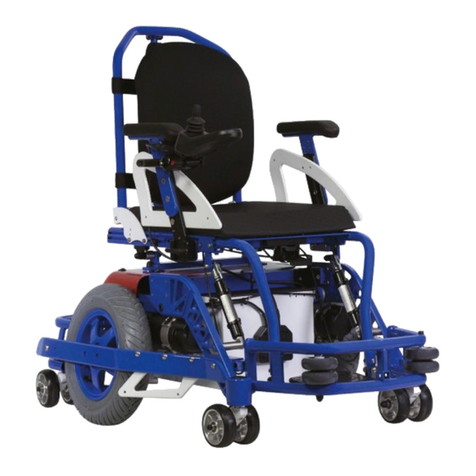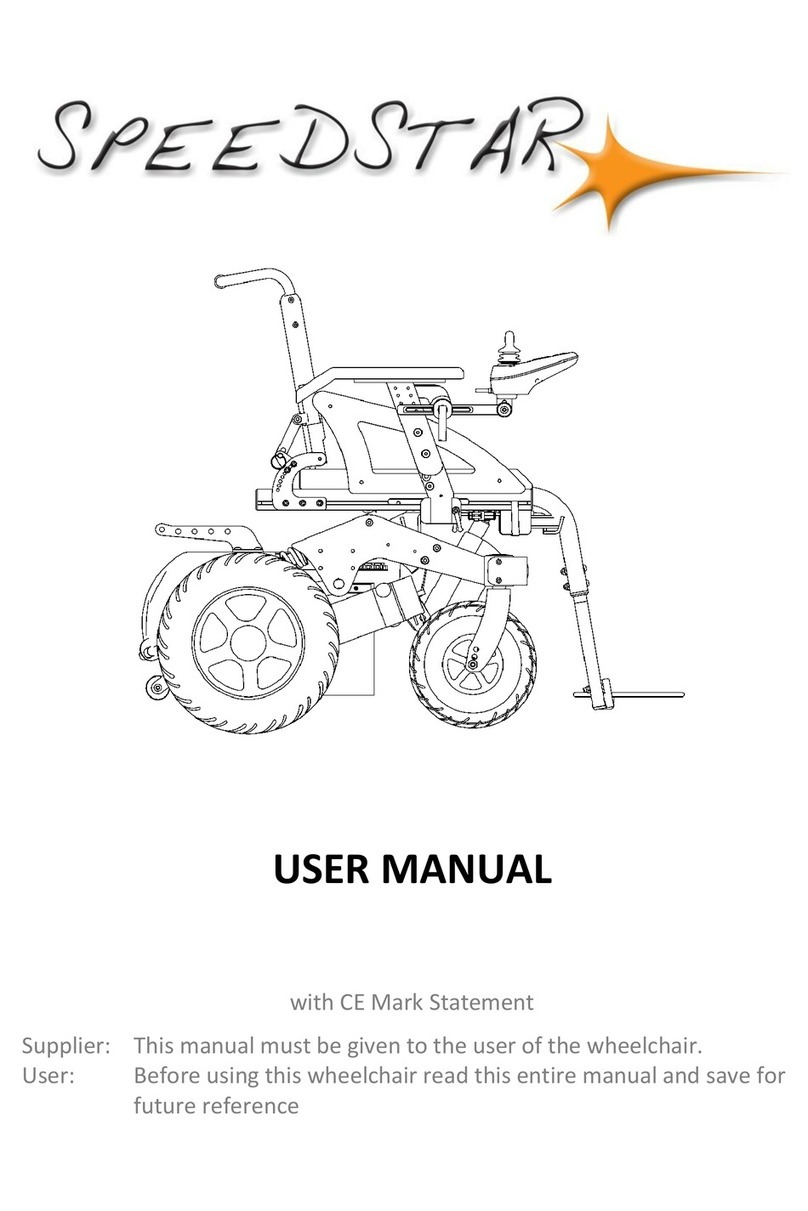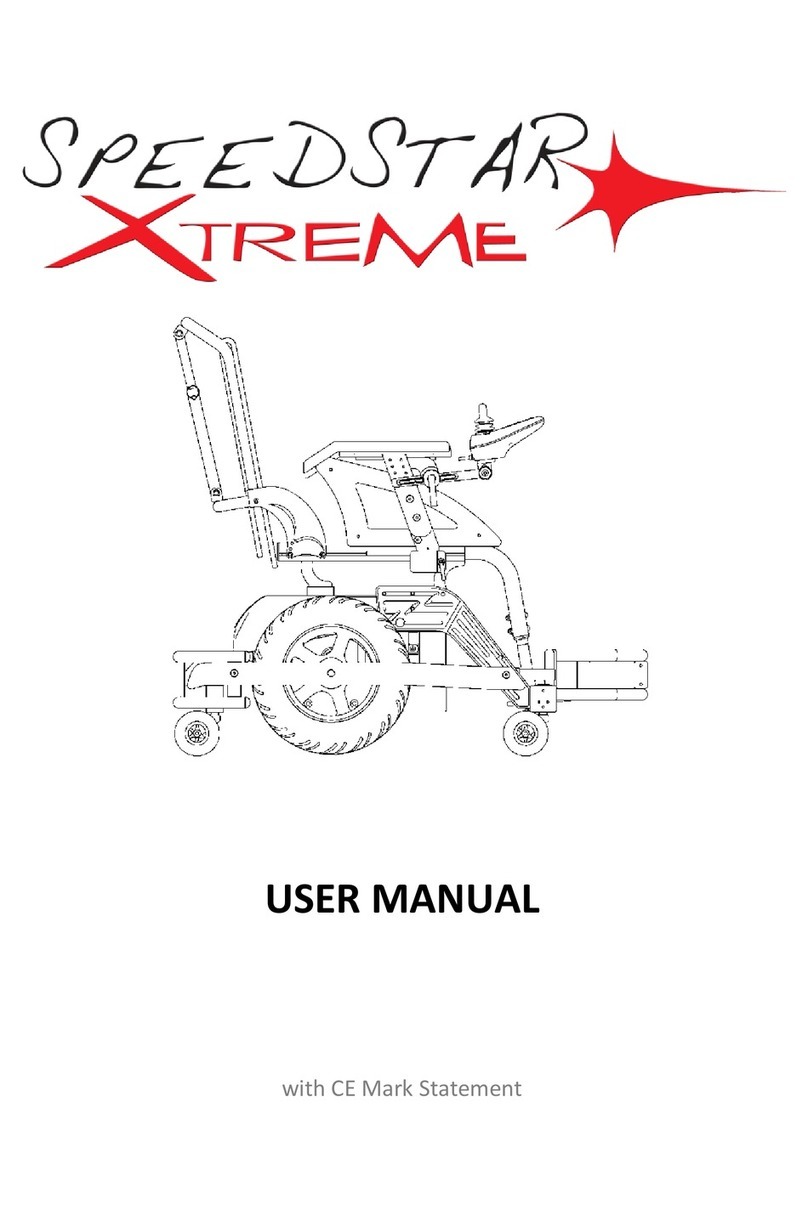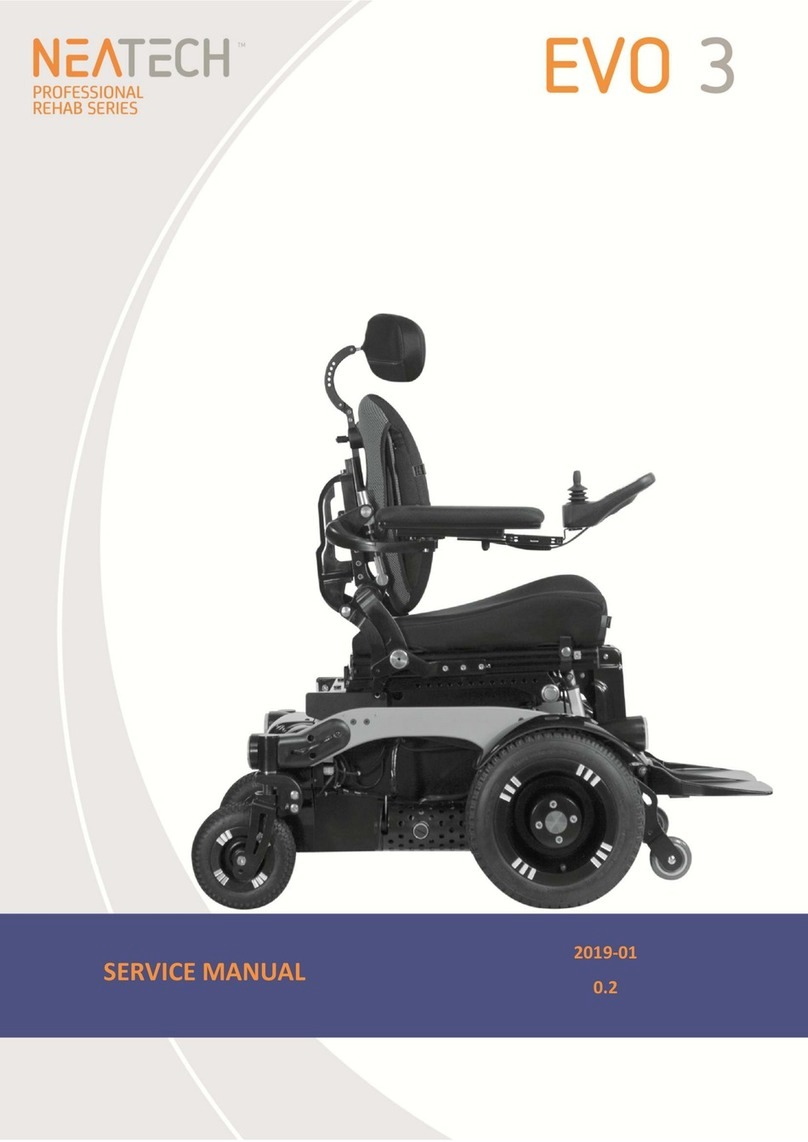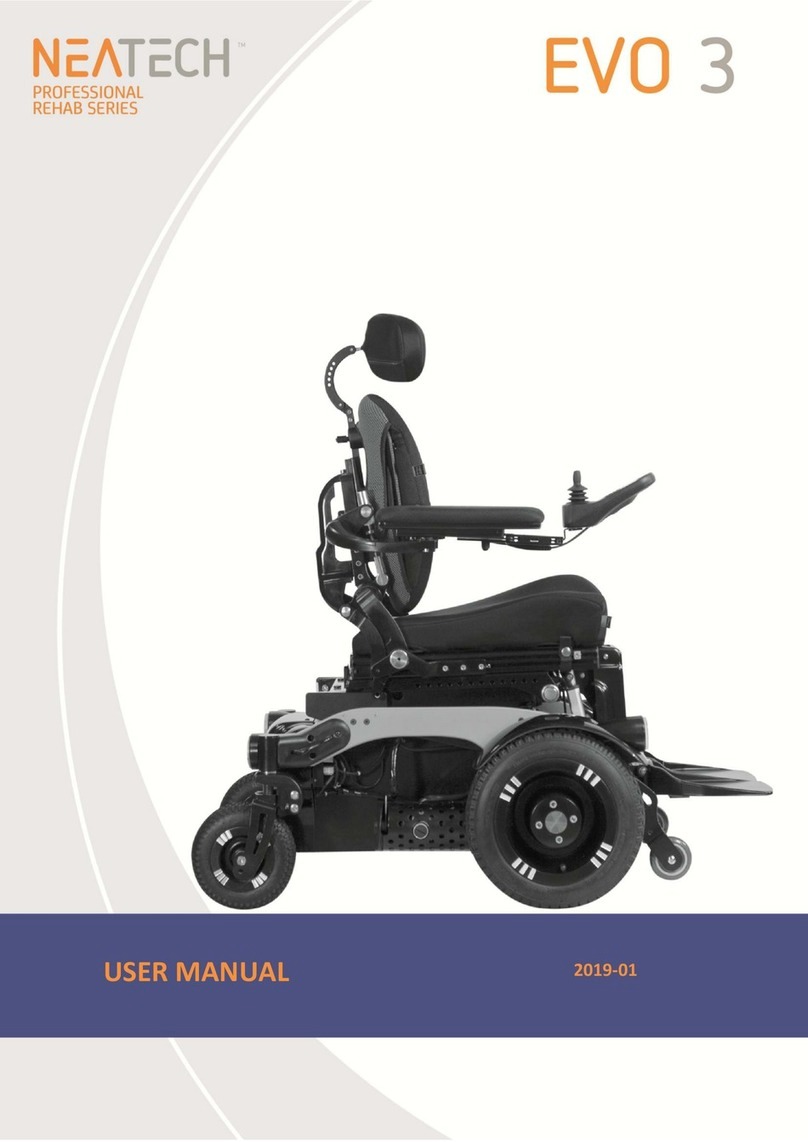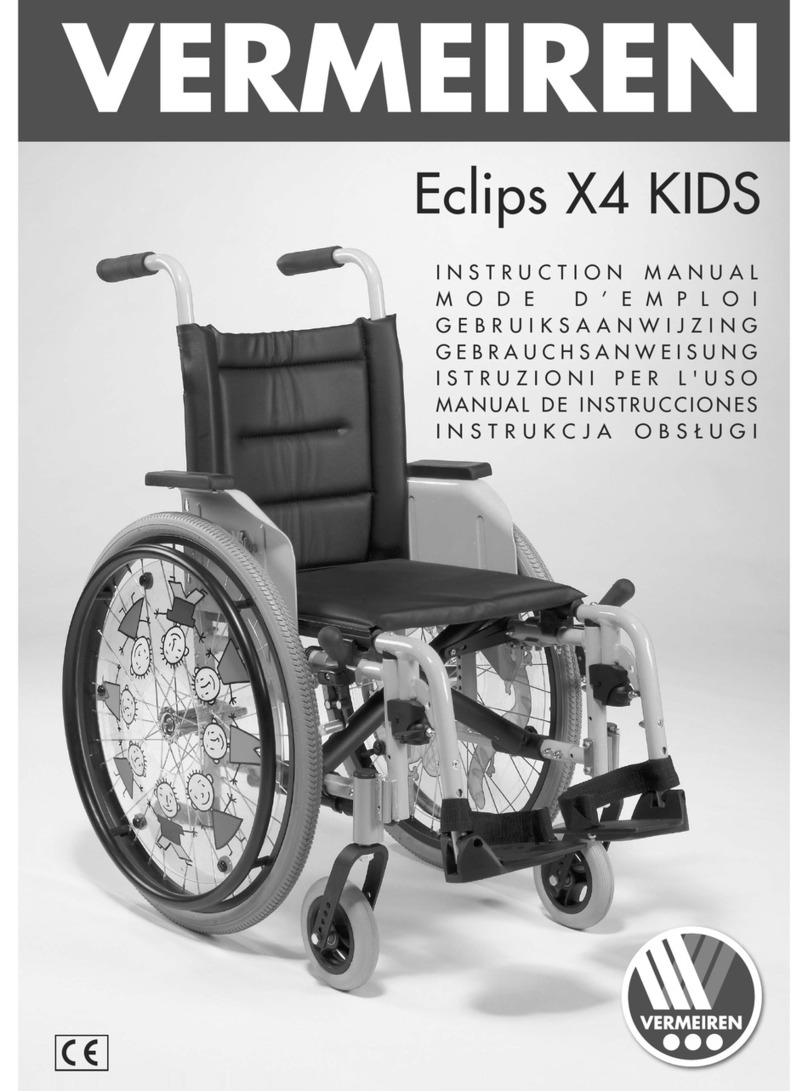3. USE OF THE PRODUCT________________________________________________________________ 30
3.1. Use of parking brakes______________________________________________________________________ 30
3.2. Lever operated functions___________________________________________________________________ 31
3.3. Dynamic seat ____________________________________________________________________________ 33
3.4. Use of angle adjustable legrest with spring ____________________________________________________ 36
3.5. Use of active dynamic footrest ______________________________________________________________ 38
3.6. Use as a seat in a motor vehicle _____________________________________________________________ 41
3.6.1. Securing the wheelchair with a strap restraint system __________________________________________________ 46
3.6.2. Occupant restraint instructions ____________________________________________________________________ 49
3.6.3. Description of the Dahl Docking system Mk II _________________________________________________________ 53
3.6.4. Installation of the DAHL Docking stations in the vehicle _________________________________________________ 57
3.7. Transport and storage _____________________________________________________________________ 62
4. MAINTENANCE _____________________________________________________________________ 67
4.1. Cleaning ________________________________________________________________________________ 67
4.2. Controls to be performed on the product______________________________________________________ 68
4.2.1. Brake adjustment _______________________________________________________________________________ 69
4.3. Tire puncture ____________________________________________________________________________ 71
4.3.1. User information ________________________________________________________________________________ 71
4.3.2. Service information______________________________________________________________________________ 73
4.4. Reuse __________________________________________________________________________________ 73
5. TECHNICAL SPECIFICATION____________________________________________________________ 74
5.1. Drawings________________________________________________________________________________ 76
